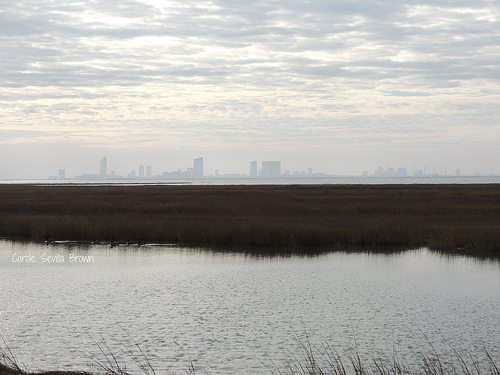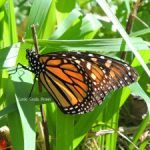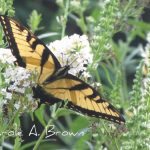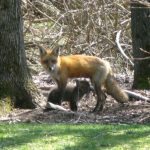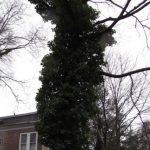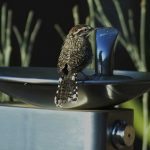In Sunday’s New York Times, Natalie Angier wrote about the discovery of a newly discovered monkey species, the Saddleback Tamarin in the Brazilian Amazon. Since the 2005 summary of the worlds mammal species (totaling 5400 species) another 400 species have been discovered.
This may lead you to say to yourself “See, there’s no problem with human activity. Look at all these new species. It’s the way of nature; species come and go all of the time.”
This is a very short-sighted view. Species are now going extinct at a rate 100 times faster than at any other time in history. And the reason for this is habitat loss, fragmentation, and degradation due to human action.
In fact, the reason why we are now discovering these new species is also due to habitat loss and fragmentation. As large areas of the Amazon are being opened up to logging, roads are built and areas are clearcut. This makes formerly inaccessible areas much easier for humans to get into, including scientists who are in a desperate race to catalog the world’s species before they are gone.
- Habitat loss happens when areas are clearcut for human development.
- Fragmentation occurs when roads are cut through previously contiguous areas of habitat.
- Degradation occurs in a variety of ways, including ocean dumping, pesticide and other toxic chemical run-off, air pollution, and the rise of invasive species.
This is where your Ecosystem Garden comes in
We must move beyond the self-centered view that “It’s my property and I can plant or do whatever the heck I want, and don’t you dare tell me otherwise,” to a broader view that recognizes that we are all connected. The decisions we make in our gardens have consequences and implications far beyond our garden gate.
Your wildlife garden can become a stepping stone of habitat between larger areas
When you join together with your neighbors, you can create habitat corridors through which wildlife may safely move. When you fight for habitat protection at your town planning meetings, you are helping to save much larger habitats where your local wildlife can survive and thrive.
Every action that you take to protect habitat, to conserve natural resources, and to give a little back to wildlife has consequences that ripple through the ecosystem around you
Sadly, every action that you take that does not work for any of these goals, or even creates negative impacts on the environment, has consequences that also resound through the ecosystem.

